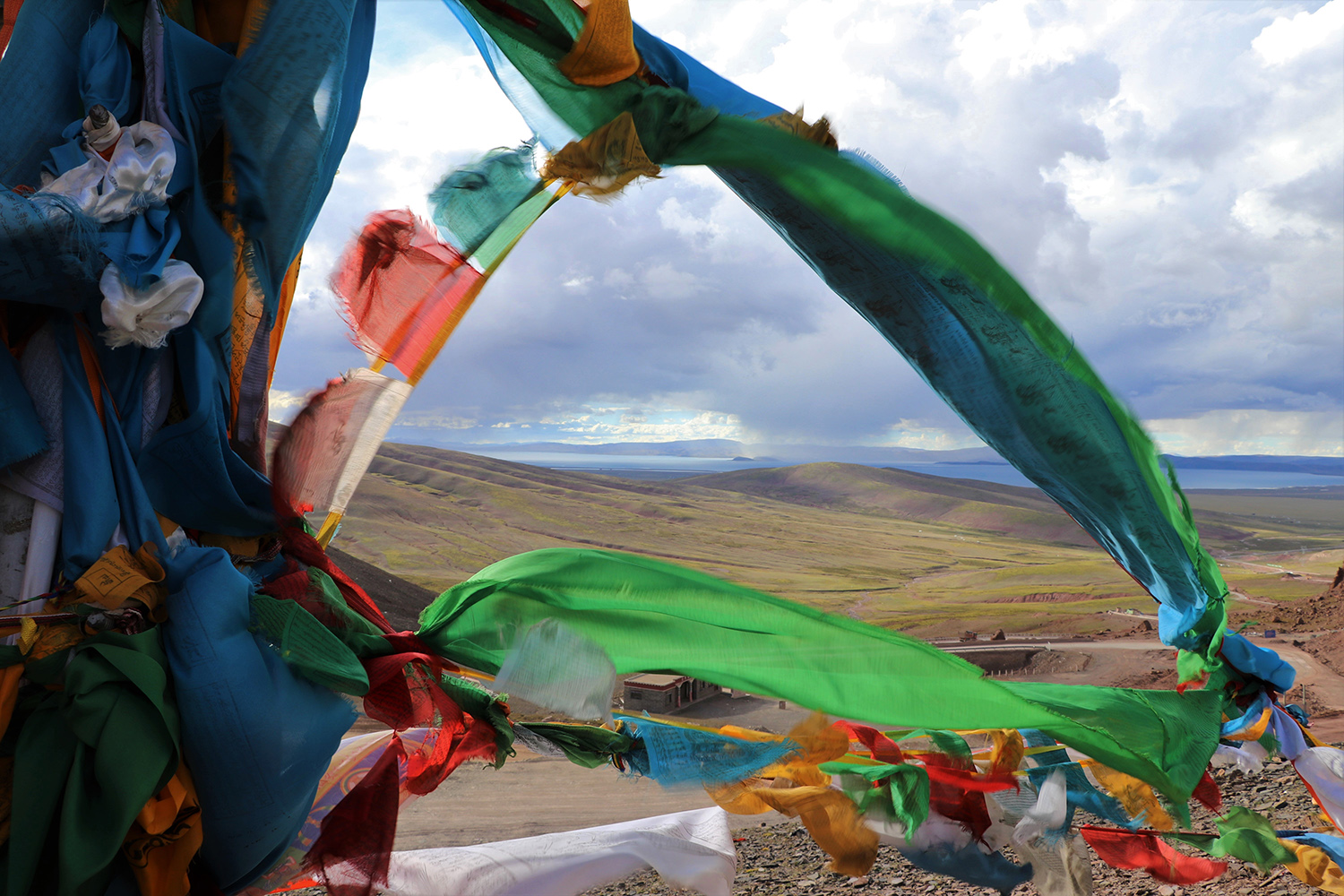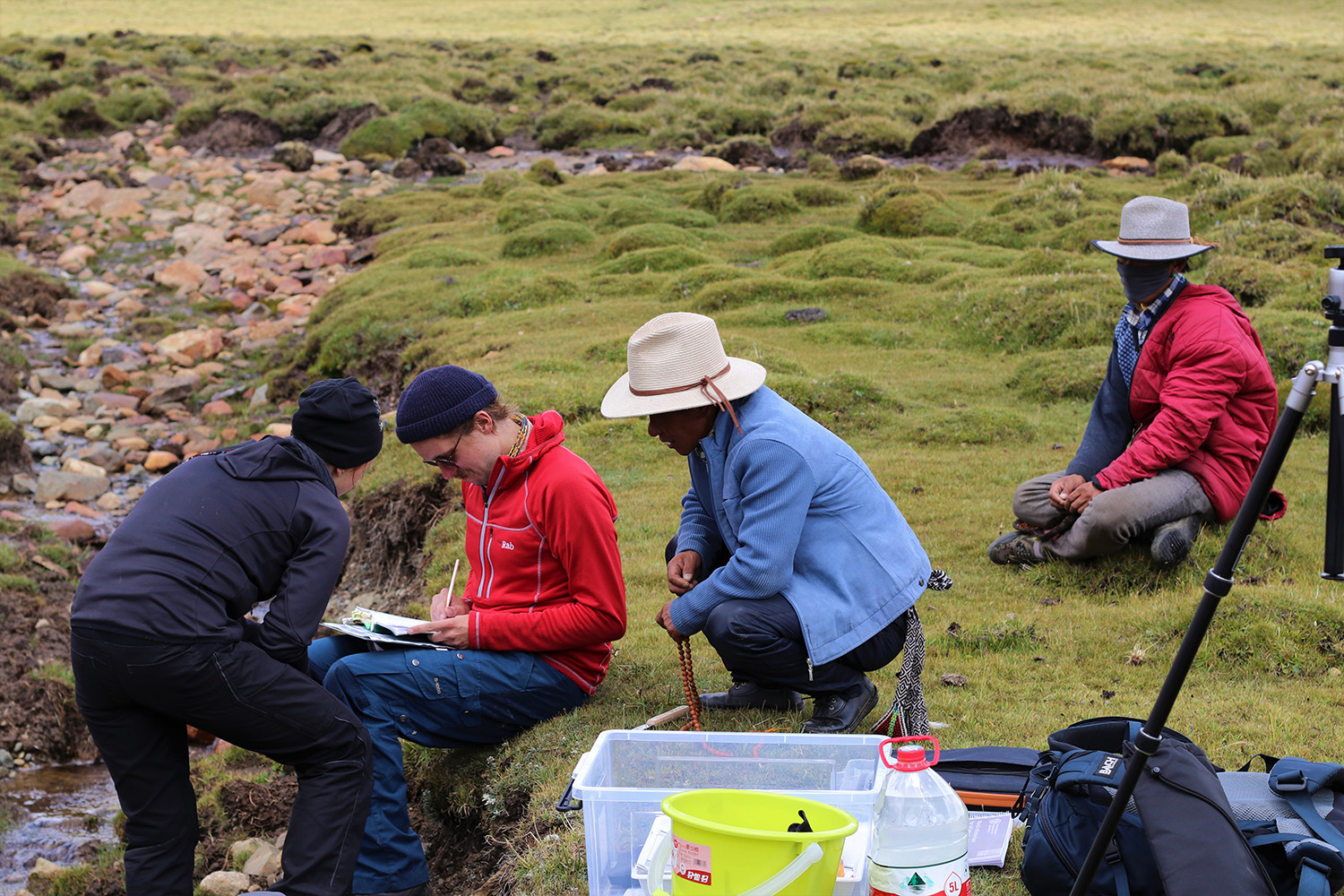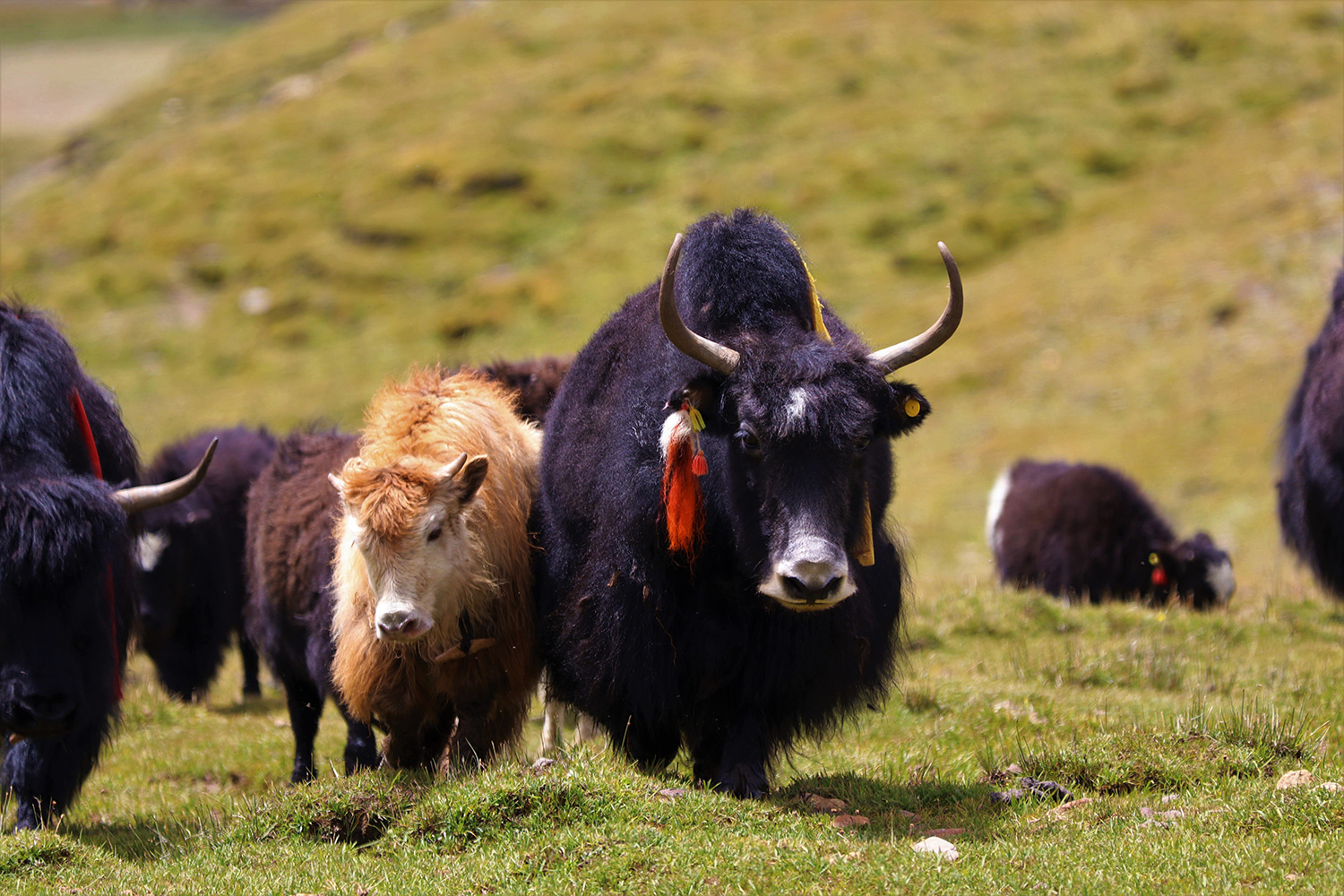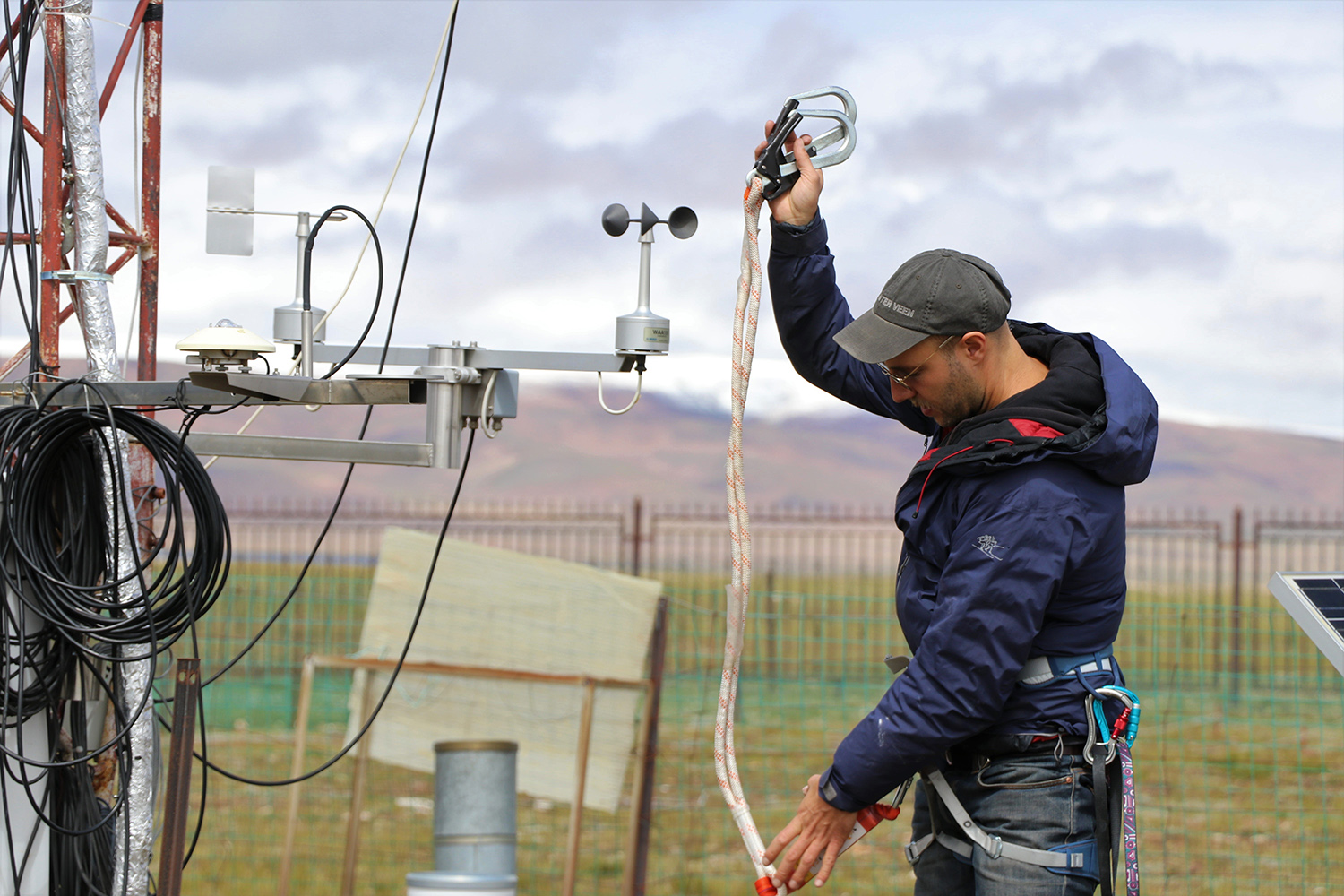Research at an Altitude of 4,700 Metres Logbook TransTiP - Part 5: Start of Field Work at Nam Co
Arrival at destination: The team of the international DFG Research Training Group TransTiP has reached the research station at Lake Nam Co in the highlands of Tibet. The field research work can now begin. In this logbook, Dr. Nicole Börner, Kim J. Krahn and Alexandra Müller from the Institute of Geosystems and Bioindication explain why scientists should not be afraid of heights.

The first view of Nam Co from 5,200 meters above sea level from the highest pass in the Nyainqentanglha Mountains. Picture credits: Kim J. Krahn/TU Braunschweig
“On the 30th August 2019 we finally made our way to the NAMORS research station with a jeep convoy. From there the field work in the different areas will start. On the four-hour drive, we made an impressive stop at the highest pass in the Nyainqentanglha Mountains, from where you could catch your first glimpse of Nam Co at an altitude of 5,200 metres. At this point we could admire many prayer flag tents, which are typical for the Tibetan faith and present a colourful structure in the landscape. When we arrived at the research station, we first had to move into our rooms – mostly four to six-bed rooms. Here we have to get used to the new altitude of 4,700 meters again, at least 1,000 meters more than in Lhasa. Even though the air was much thinner, most of the expedition participants fortunately found it much easier to get used to the new altitude this year.

PhD student Philipp Maurischat and master student Doreen Fleck recording a soil profile in the glacier catchment area. They are aided by two Tibetans. Picture credits: Kim J. Krahn/TU Braunschweig
First days in the field
No time was lost and research work was started directly in the field. We accompanied our PhD student Philipp Maurischat to one of his working areas in front of the Niyaqu Glacier. In this area, which was crossed by small, glacier-fed streams, the scientists took water samples and carried out soil approaches. The question of how the melting of the glaciers affects landscape development and nutrient conditions in the catchment area and the lake is particularly exciting. Our research work was also met with great interest among the Tibetans living in the area, who looked over our shoulders at work and were always very open-minded. We had to be cautious with the freely running yaks, which followed us in large groups at a fast pace and were in close contact with us.

Also always part of the party: Yak herds on the pastures in the working area. Picture credits: Kim J. Krahn/TU Braunschweig
Climbing for research
The work of the doctoral students is not so simple. Sometimes that means you have to be free of vertigo. For example, there is a measuring tower on the premises of the research station on which our doctoral student Felix Nieberding’s Eddy Covariance Sensor is located at a height of 20 metres. In order to obtain correct data, the station has to be cleaned regularly, which thus requires a lot of courage. Fear of heights is out of place here. With sufficient protection, however, Felix Nieberding was able to successfully rid his station of any dirt particles. Now there is nothing to stand in the way of measuring the CO2 flow between the ground and the atmosphere.”

PhD student Felix Nieberding preparing to climb the measuring tower in front of the NAMORS research station. The eddy covariance sensor at a height of 20 metres has to be serviced regularly in order to function properly. Picture credits: Kim J. Krahn/TU Braunschweig
Text: Dr. Nicole Börner, Kim J. Krahn, Alexandra Müller
